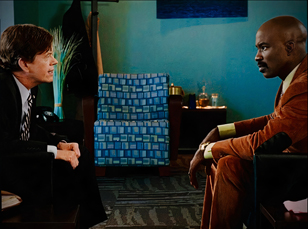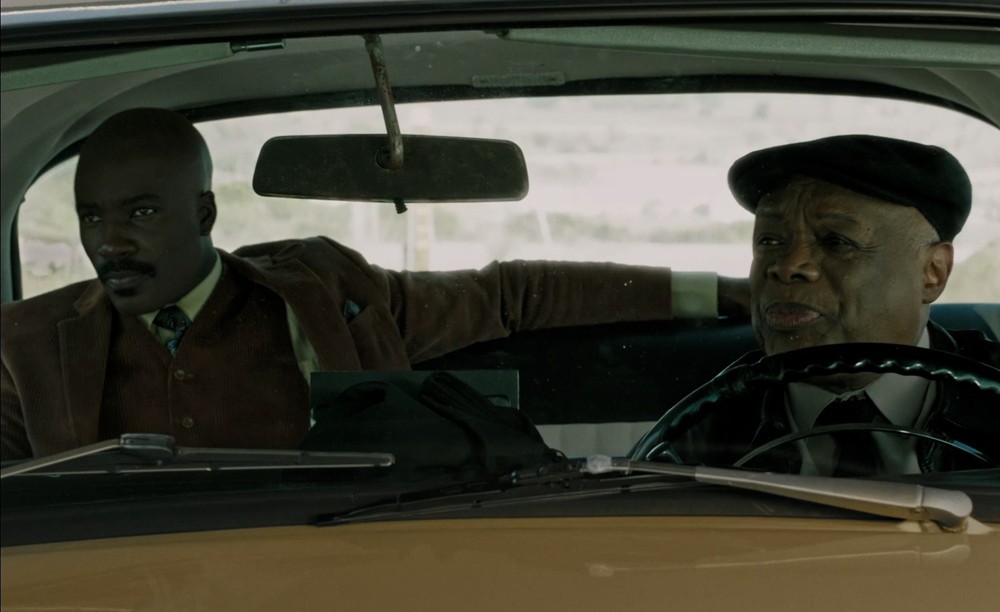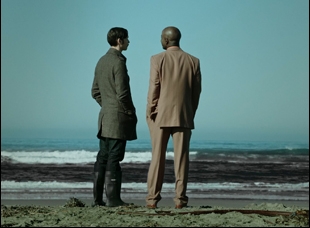There hadn’t been a gold rush in San Francisco in over a hundred years when Charlie Walker had gone into business, but it felt like one in 1971. Few could benefit from an oil spill, but when a pair of tankers carrying crude oil for Standard Oil polluted the waters just underneath the Golden Gate Bridge, Walker was uniquely positioned to win the hotly contested bid to serve as part of the cleanup crew, having no union ties when he was unwelcome in predominantly white truckers’ union that dominated the industry at the time as a Black man and unwilling to join the collective of their largely Black counterparts who never received a fair shake. Owning just a single truck, Walker nonetheless was able to beat out far larger contractors in the Richmond area to carry away the waste, a score that would pocket him millions and yet was hardly easy money when navigating the tricky situation involved having the right demeanor to deal with both the hippies who came out in force to protest around the cleanup and oil company execs that wanted to avoid even more bad PR.
Somehow a half-century has passed without Walker’s story being adapted for the screen, but long before there was a term for code-switching, the entrepreneur could enter any room with a movie star swagger and it took Patrick Gilles reimagining his story in the vein of one of the blaxploitation films of the era to commit it to celluloid. With “Luke Cage” star Mike Colter onboard, “I’m Charlie Walker” sees the wildly charismatic Walker play any perceived weaknesses as strengths when he take advantage of any patronizing that comes his way as a Black businessman to give his family a life that he could never afford if he worked towards becoming a foreman for brick layers as his wife (Safiya Fredericks) once suggests, one of the few managerial positions that seem reasonably attainable at the time. Once the driver for future San Francisco mayor Willie Brown, Walker’s becomes powerful enough to have Brown driving for him – at least on film in a cheeky cameo, and the irreverent biopic may warn it has a relatively loose connection to how history actually unfolded, but it’s true to Walker’s indefatigable spirit.
Recently, Gilles spoke about how he could bring this little known slice of Bay Area lore to the masses and working with Walker and Colter to do justice to a larger-than-life persona, as well as the meeting the demands of making a period piece on a budget and getting the opportunity to see Walker have his life reflected back to him on screen.
Charlie Walker had written a book about his experience, probably about 20 years after [it happened] in the ‘90s. He had self-published and he has a lot of friends – he used to be Willie Brown’s driver and if you’re from California, Willie Brown was not only the mayor of San Francisco, but speaker of the house and he had a lot of power. [The film’s producer] Bill Keefe is also a friend of Willie’s and [he and Charlie] met and became friends. They’re in similar industries – Bill is in construction and Charlie was also in construction and trucking, so Bill got a hold of the book and just really enjoyed it and said, “What are you going to do with this book?”Then Charlie and Bill saw a piece of work that I did and liked it, so Charlie asked me to do it and I was honored. I couldn’t say no.
What was it like working with Charlie as a producer and adapting his story for the screen?
Such a great partner to work with. He understood my task to maybe take three or four different people in his life and make an archetype character to represent that position in the movie and he was so good with it. He didn’t get bogged down in the details. He just knew the big picture was there. I’d go into the city and meet with him for hours and we’d sit in his restaurant or cafe of choice. Sometimes we’d just sit in his car for two hours – and I mean you’d have to open the car and roll down the windows, we’ve been here for too long. [laughs] I finally sat him down for about a four-hour interview so I could get everything he’s already told me just locked on tape and I approached [the story] as a family man, just looking for a job.
Sadly, a lot of the challenges that Charlie had to overcome still exist today. It’s shocking to me because in the ‘70s, I was just a little kid, but I’d grown up and seen things that I thought we would get over and There’s so many things happening in our country today that I think this story is vital. What I hope people get most out of this is how much it reveals our life today and then you step back and look and they’re all driving cars from the ‘70s and there’s no cell phones and this is a story that’s almost 50 years old, but a lot of things that happened to Charlie happened to someone else in this country last week.
You actually tell Charlie’s story through his wife’s perspective. How did that decision come about?
That was really a decision from Charlie, but also the actor Safiya Fredericks. The African-American family structure is the foundation. You talk about successful people, they’ll go back and talk about their mother and that’s not just in the African-American family, but in Charlie’s particular family structure, that’s what it was and he was an African-American. He truly did everything for [Anne] and his family and he knew her well enough where [he’d say], “Look, I haven’t come home for two days” and she knows it’s only because he’s chasing down this job, nd you see it from her perspective because she is the most nurturing and quite frankly most common-sense person. Charlie will do anything to get that job, to be his own boss and she sees three or four steps ahead.

Not only was it a period piece, but it was an indie film, so we were lucky enough to use the one private beach on the coastline of California where you can do things like put trucks on a beach and do fire. It’s called Dillon Beach – actually, I shouldn’t put that secret out, but now it’s out and it’s just west of Petaluma, California. They were so wonderful to us and really that we got a beach was the only thing that greenlit the movie. We shot a lot of the film over in Oakland for San Francisco because San Francisco had a different skyline and we did some work matting out a few buildings that weren’t around in the ‘70s, and there’s Victorian looking homes over in Marin County. But it was difficult.
Your first film “Olive” was a formal challenge when it was all captured on a cell phone camera. Was the experience opened up here?
“Olive” was a true indie film with a small crew with great big actors. And you can’t say easier because there were more moving parts [here] but I definitely could focus more one on one with the actors. [Typically] there are 15 or 20 people around you and you’re trying to have a quiet moment with your actor and after about day three, we were able to do that. It was a great experience and I prefer a medium to small crew over bootstrapping it and super indie.
What sold you on Mike to play this guy?
Man, I hope some day everybody gets to meet him. He comes in the room and he’s really quickly imposing. He’s a big dude and when he speaks to you, he’s so thoughtful and smart and prepared and good-looking, so you see the whole thing develop right in front of you. I met with a couple of other really great people, but Mike was such an imposing figure and I always love the juxtaposition of a shorter person with privilege speaking to a more imposing person who has this handicap, based on society, and [someone] would look at this and go, “Hey man, this is not a fair fight. The big guy on the right is just going to grab this guy by the shirt and say, “This is my trucking company, this is my beach. Get off my beach.” Because of these social dynamics, you feel the unfairness and I thought physically Mike brought that because aside from maybe a couple of our grips, he was the biggest guy on set.

Actors like to work with actors and don’t really care to work with nonactors because that’s more work for them and they don’t really know what to expect. But the truth is Willie was wonderful and I had to remind [Mike] that He was in “The Godfather Part III,” so Willie’s an actor, but we cast him as a cab driver, not knowing that he worked his way through Hastings Law School in the ‘50s as a cab driver and when I found that out, I was shocked. He told me face-to-face before [filming], “Don’t bother giving me wardrobe. I still have my jacket and my tie from when I was a cabbie.” He showed up completely in costume. They barely put some powder on him and we sent him on his way. He was wonderful.
What was it like showing it to Charlie when you got it finished?
Charlie loves it. He was there every day on set, there for every rewrite and has gone to every screening. He loves it. I mean, imagine if you and I did something profoundly important enough that people would want to come together and make a movie of a moment in your life. Charlie wrote a book, so he had a story in print for posterity, but the movie’s a different thing. He loves it. He eats it up. He’ll stand there and wait for people to come up and talk to him because Charlie’s also a pretty big dude. He’s a trucker.
“I’m Charlie Walker” opens in theaters on June 10th.





